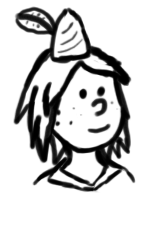Skogsmulle
 |
| By In Donaldismo Veritas (Own work) [CC BY-SA 3.0 (http://creativecommons.org/licenses/by-sa/3.0) or GFDL (http://www.gnu.org/copyleft/fdl.html)], via Wikimedia Commons |
Mulle is a troll who lives in the woods (skog) of Sweden and teaches children about
nature with the help of his friends laxe, fjällfina
and nova. Skogsmulle is for children aged 5 to 7 and is preceded by courses for
children as young as 2 and is a precursor for educational programmes aimed at older children, teenagers and adults. The programme was introduced by Gösta
Fröhm in 1957 to supplement the skiing and ice skating which made up the normal
programme of children's activities and education provided by the
friluftfrämjandet (fresh air foundation) at that time (friluftsfämjandet
2012).
Forest Schools
 |
| One of the tree faces made by a nursery group I thought a six week forest schools course to in 2011 |
Forest
Schools are a relatively new idea in the UK, based on similar well established
programmes in Scandinavia such as Skogsmulle in Sweden or naturebørnehaven in Denmark. Primarily
aimed at younger children (primary school age or younger) it is easy to link
forest schools courses to the national curriculum even up to level 3. Due to
the relatively recent establishment of Forest schools in the UK there is little
data to indicate whether learning simple ecological principles such as food
chains and plant identification in a forest school setting prepares learners
for more advanced theory in the classroom or in FE, this begs the question; are
students more environmentaly aware in countries where these programmes are well
established and heavily subscribed to?
In a vocational education setting Forest Schools is relevant within the
subjects of countryside management an outdoor education as these students may
require training to deliver Forest Schools programmes in the future.
Comparing the Two
Here I will compare the goals and also the approach to delivering and embedding the programmes.
Skogsmulle
|
Forest Schools
|
|
Goals
|
The need to Improve children’s relationship with nature and make them
aware of the environment to the point that they can influence society for the
better (friluftsfrämjandet 2006).
|
Primary goals include development of creative skills, physical
development, personal and social skills and general knowledge (Knight 2009)
with the development of environmental understanding a secondary goal.
|
Curriculum model
|
Environmental principles revisited in ever increasing detail
throughout skogsknop (2 to 3 yrs), skogsknytte (3 to 4 yrs), skogsmulle (5 to
7 yrs), stövare (7 to 9 yrs) and on to educational programmes for teenagers
and adults.
|
Forest Schools is often used as an ’extra’ activity (with links to
published curriculum being very unclear) for young learners, it may have
valuable learning outcomes which will help children in the future but these
are not always obvious and may even form part of a hidden curriculum.
|
The two although superficially different are fundamentally similar, perhaps more entrenched in the culture and formal education in Scandinavia, but there is time for that to develop in the UK.
One question springs to my mind though, why the emphasis in the UK on personal and social development rather than the 'nature' element of the programme. I hope it's not because our 'system' here values nature so little that there had be some other, more measurable, justification for Forest Schools.




